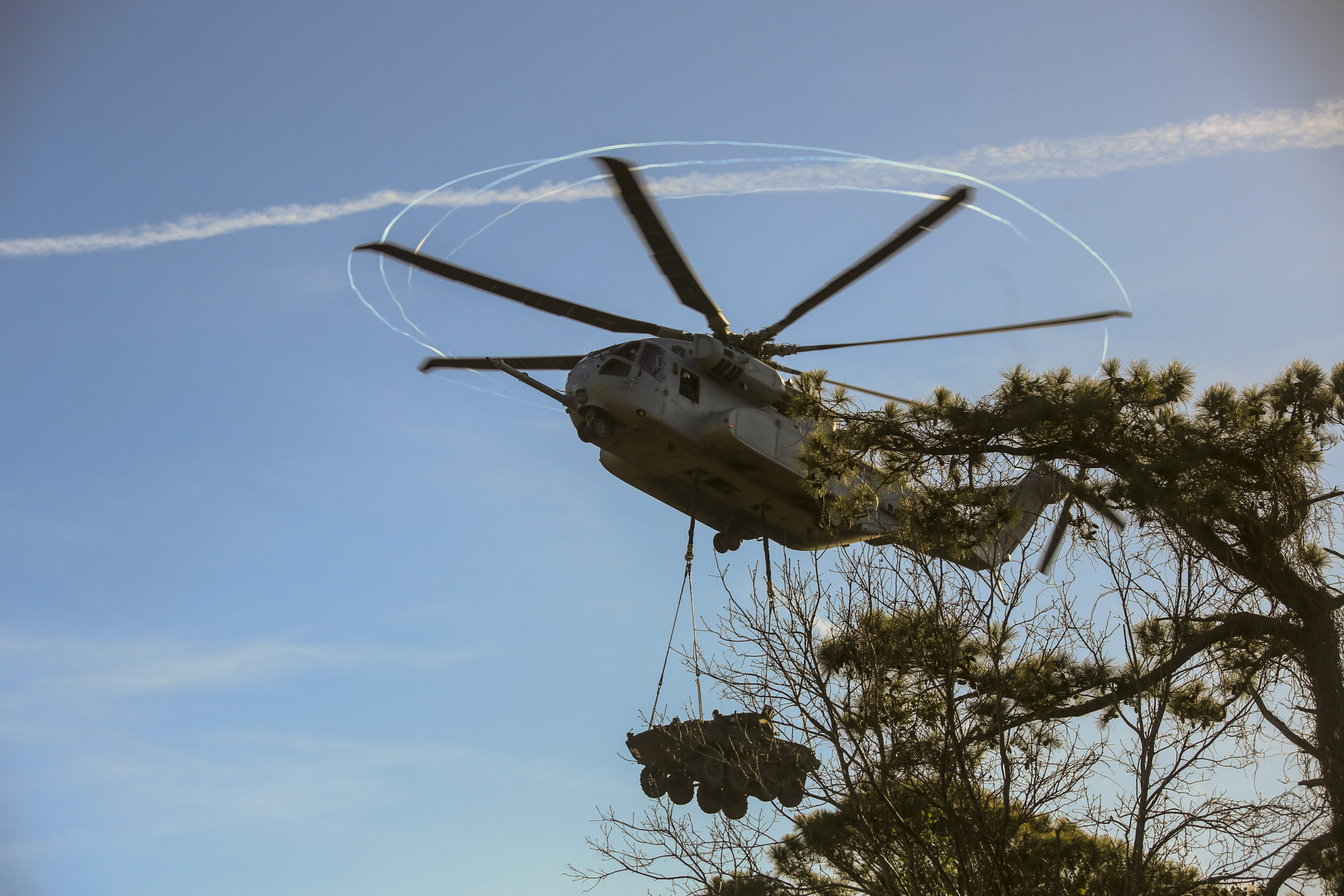By Robbin Laird
I ended the last article in this series with this question: What then might be the interaction between the CH-53K and lift mobility in the evolution of the distributed force?
I am going to breakdown my answer to that question in several parts.
In this article, I highlight two initial contributions which the CH-53K brings to a distributed force.
If we assume that in case of force distribution designed to avoid the need for fixed runways or ports to bring in ships, then one would consider vertical lift to be a key part of such an effort.
One advantage which the CH-53K has in comparison to other vertical life assets is that it can bring more in a single pass to the point of operation for the time desired from a distributed location.
When I did a comparison of the Chinook versus the CH-53K for operations in Europe I highlighted this case:
“A 2019 exercise highlighted the challenge if using the Chinooks to move capability into the corridor. In the Green Dagger exercise held in Germany, the goal was to move a German brigade over a long distance to support an allied engagement. The Dutch Chinooks were used by the German Army to do the job.
“But it took them six waves of support to get the job done. Obviously, this is simply too long to get the job done when dealing with an adversary who intends to use time to his advantage. In contrast, if the CH-53K was operating within the German Army, we are talking one or two insertion waves.”
If one considers signature reduction as part of deploying a distributed force doing something in one pass versus six is an obvious advantage.
But there is another aspect of an ability to leverage a single pass with regard to what the CH-53K can provide as well.
Here is what the CO of MAWTS-1 underscored in a recent interview I did with him:
“Col Purcell focused on the ability of the King Stallion with its triple hooks to carry significant loads to operating locations without having to land and be on the ground for the time necessary to unload from the interior of the aircraft.
“Col Purcell pointed out that the aircraft could carry significant fuel loads – 54,000 pounds of fuel — to locations the F-35B might operate from and could do so with external lift rather than having to land.
“Both the Osprey and the heavy lift helo could carry fuel inside and work as fuel providers to aircraft at a FARP. But being on the ground for significant time to do this exposed the aircraft to much greater risk than coming in and dropping off fuel from their external three hook system.
He pointed out that the legacy aircraft two hook system could lead on occasion to “uncommanded” load releases whereby the system on the aircraft would not be able to judge correctly whether loads on the hooks were compromising the safety of the aircraft. Systems on the aircraft prioritized aircraft safety over carrying loads and might jettison a load.
“The CH-53K’s systems can correctly determine whether the load being carried by the aircraft affect the center of gravity of the aircraft, which is central to its security, and can make more accurate decisions with regard to the safety of the aircraft.”
In other words, with what the aircraft can carry inside and outside of the aircraft it can reduce significantly the time necessary to be in the distributed location which also reduces the signature of lift in support of force distribution.
Featured Photo: U.S. Marines with Marine Operational Test and Evaluation Squadron One (VMX-1) test the capabilities of the CH-53K King Stallion on Marine Corps Base Camp Lejeune, Dec. 16, 2021. Personnel with VMX-1 conducted surge flight operations to test the external lift capability of the CH-53K in support of amphibious operations. It can externally transport 27,000 lbs. over 110 nautical miles and has a max external lift of 36,000 lbs., three times that of the legacy “E” aircraft. The CH-53K King Stallion is a heavy-lift cargo helicopter currently being produced and tested to replace the CH-53E Super Stallion. (U.S. Marine Corps photo by Lance Cpl. Samuel Lyden)
For the first story in the series, see the following:
Mobility, Distributed Force and Lift: The Importance of the CH-53K


